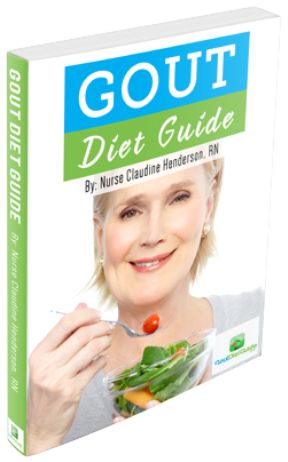It is important to remember that you can eat for gout, and from receiving any food is discarded. More information on this topic is revealed in Claudine Henderson’s Gout Diet Guide. Be sure to download her ebook, if you really care about your health. Gout If you need to reduce the intake of protein to 1 g per day per 1 kg of body weight.
It contributes to the formation of uric acid in the human body. It is also necessary to limit salt intake – up to 5 – 6 g per day. The recommended intake of water is 2.5 liters per day if there’re no related heart diseases and kidney failure. In no case do not overeat! To make better use of food consume it in boiled form.
Completely exclude meat of young animals (veal, chicken) meat products – side processing of animal carcasses products (liver, kidney, heart, diaphragm, tongue, brains, lungs, trachea, head, ears, lips, pork leg), fish (herring, pike, sardines, sprats), eggs, coffee, tea, cocoa, chocolate, legumes (peas, beans, beans, lentils, peanuts), mushrooms; foods that contain large amounts of oxalic acid (spinach, lettuce, eggplant and radishes), any sausages and smoked products, savory snacks, canned food, lard, beef broth and soups, alcoholic beverages, especially beer and wine; cauliflower and Brussels sprouts, figs, cranberries, lingonberries, yeast, salty cheeses.
These products contain high amounts of purines in their composition. Limited consumption of the following products: shortenings, pork, beef and mutton fat starchy foods – jam, cookies, syrups, candies, honey; salted and pickled vegetables, rich products.
What can you eat, you will learn after reading Claudine’s guide. She has real experience in managing gout through a low purine diet. The woman on the personal experience led Formula to a proper diet for gout. I wish you never to get sick! Thank you for attention.





